How To Recover Deleted Excel Files on Windows 10/11?
6 min. read
Updated on
Read our disclosure page to find out how can you help MSPoweruser sustain the editorial team Read more
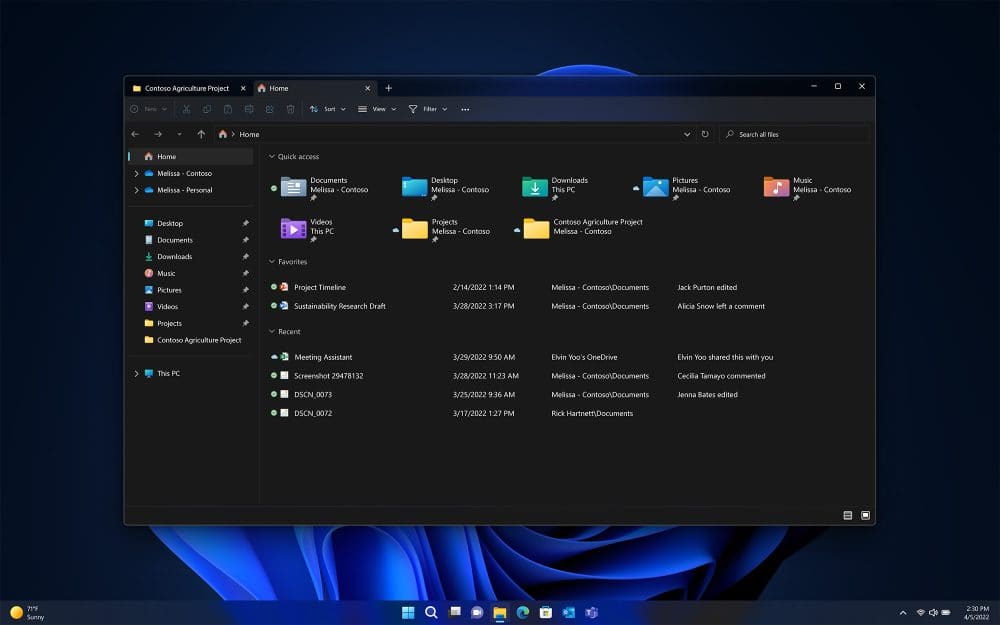
Wondering how to recover deleted Excel files on your Windows 10 or 11 PC? Malware, human error, or wholly uncontrollable circumstances may all cause it. Check out this simple guide to recover the deleted Excel file with ease.
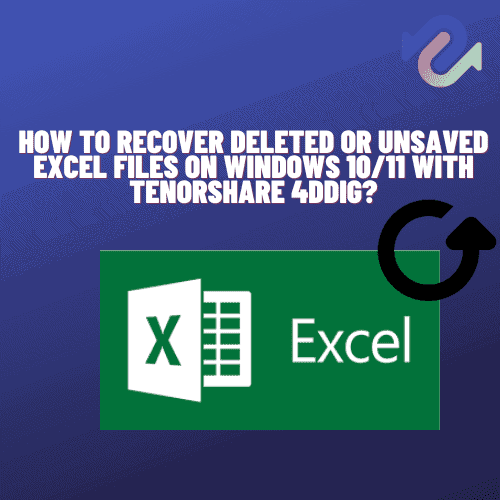
How to Recover Deleted Excel Files on Windows 10/11 With Data Recovery Software?
There are many ways to retrieve a deleted Excel file on Windows 10/11, but people always choose the most trustworthy one. Tenorshare 4DDiG is a good choice; it provides an all-in-one solution for all data recovery problems and includes recovering deleted excel files.
Let us see what unique features it has:
- Recover deleted or lost Excel files from Windows/Mac/USB flash drive/SD card/formatted hard drive, etc.
- It supports multiple loss scenarios such as deleted, formatted, corrupted, etc.
- It supports over 1000 data types such as photos, videos, audio, documents, and others.
- No viruses and malicious pop-ups are guaranteed 100% safe.
After understanding its features, let us see how to use Tenorshare 4DDiG in detail.
Step 1:
To get started, download and install the Tenorshare 4DDiG Windows Data Recovery program to recover deleted excel files.
- To retrieve a deleted Excel file from a local disk from a list of hard drives, choose the local disk where you lost your data, and then click Start to begin working with the interface. This is the first step to learning how to recover a deleted Excel file from desktop.
- Start the program, connect your external hard drive to the computer where you lost your data, and then choose the external hard disk from the drop-down menu to scan your external hard drive.
Step 2:
You can halt or cancel the search at any moment using 4DDiG, and it will instantly begin looking for deleted excel files, as well as any other files and data, on the local disk or the external hard drive, depending on which scanning option you choose.
Within the Tree View of the program, you will see subfolders labeled with names like Deleted Files, Existing Files, and Lost Location. You may also go to the File View to examine other files, such as emails, documents, or even bigger files like movies and images.
Step 3:
After the target Excel files are found, you can preview them and restore them to a safe and fresh place. This will prevent any form of potential overwriting from occurring.
How to Recover Deleted or Unsaved Excel Files Without Software?
Recover Deleted Excel Files
You may wonder how to recover deleted files in excel without downloading a different software, or maybe you are not allowed to download it on your work PC and need more short-term fixes.
Let’s look at these solutions on how to recover a deleted Excel file:
Solution 1: Using the Computer’s Undo Function
You may undelete your Excel files by using the “Ctrl+Z” key combination after you have already destroyed your Excel files. This will allow you to restore your deleted Excel files.
In addition, you may retrieve your files by right-clicking anywhere and selecting Undo Delete. That is much easy if you catch your mistake at an early stage.
Solution 2: Using Recycle Bin
The Windows Recycle Bin should be one location that is searched for a missing Excel file in case you passed the stage to undo your action. It is common to delete an important file by mistake, to realize at that exact moment that you need it.
- Click on the Recycle Bin on the desktop or find it on the windows menu.
- Find the thing you need to recover.
- Use the item’s context menu to find the Restore option, then click there.
Solution 3: From your Backups
Wondering how to recover an Excel file you’ve deleted? You may use the File History feature of the built-in Windows operating system.
This is the control panel menu you can turn on:
- Type restore files into the search box on the taskbar.
- Select Your Files Using File History.
- Use the arrow buttons to select the file you wish to restore and to examine the different available versions.
- To return the file to its original place, choose Restore. Or save it to another location.
Solution 4: Using the Restore function
For using this technique, the Windows Backup feature must be turned on.
To set up Backup, choose the Start menu, then input the word Backup if you haven’t done so previously.
- Navigate to the folder where you initially saved the Excel file.
- Select Restore Previous Versions from the context menu that appears when you right-click on the folder. This will reveal several different versions that Windows has preserved.
- Make sure you’re using the most recent version of the file.
- The last step is to choose the Restore option from the menu. If you have already emptied your Recycle Bin, then this is how to recover an excel file that was deleted.
Recover Unsaved Excel Files
Fortunately, Microsoft has included an autosave feature in the program that allows you to recover an unsaved excel file. It’s called AutoRecover – or Autosave.
- Open Excel, then choose the File tab.
- Choose the Recent Workbooks tab on the upper left after clicking Open.
- Hit the Recover Unsaved Workbooks option once you have scrolled down.
- To retrieve the missing file, find it and double-click it.
- The document will load in Excel, allowing you to save it to the chosen place by selecting the Save As button.
So, now you know how to recover an unsaved Excel file in Windows 11 and 10.
How To Prevent Accidental Worksheet Deletion
If you keep having mishaps, here’s what you can do to prevent them:
Enable Auto-save
You’ll see Excel’s Auto-save feature in the upper-left corner, on the title bar, if you’re a Microsoft 365 subscriber. You’ll also need to have the latest version installed. It’ll automatically save your progress as you’re working.
Create Backups
Alternatively, you can create a copy of each important file you’re working on. That way, even if you accidentally delete one version, you’ll have the other one to fall back to.
Use Password Protection
You can use third-party software to add permission settings to your files. That way, every time you have to edit and delete it, you’ll have to input your password first. And this might just prevent you from accidentally deleting it in the first place!
FAQs about Deleted or Unsaved Excel Files
Can you get a deleted Excel sheet?
You can recover deleted excel files from your recycle bin, your backups in Windows file history, or the previous versions of the file recovery.
Can an Excel file be recovered?
Yes, there are multiple methods to recover deleted excel files and also to recover unsaved excel files.
How to recover permanently deleted Excel files in Windows 10/11?
You can use data recovery tools like Tenorshare 4DDiG to restore your excel files even if they are permanently deleted from your local disk or external hard drive.
Conclusion
So, now you know how to recover deleted Excel files easily. I hope these deleted Excel file recovery methods will solve your problems, whether with quick fixes like the CTRL+Z command or deep data and file recovery software like 4DDiG.
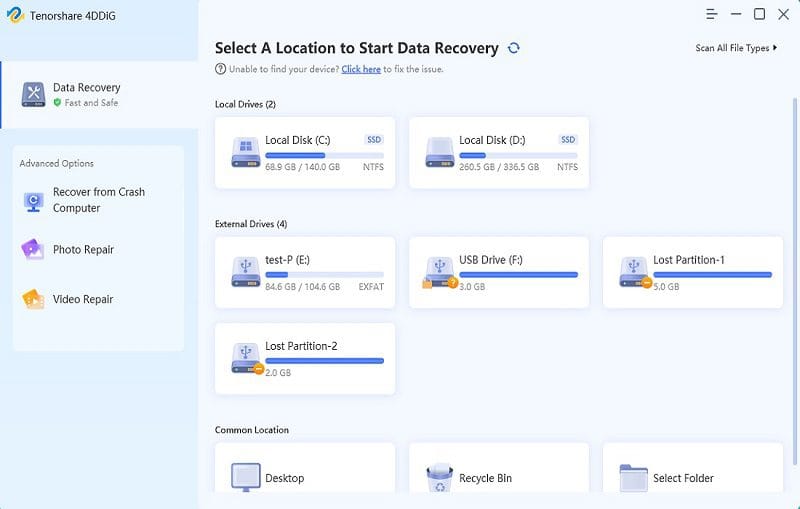
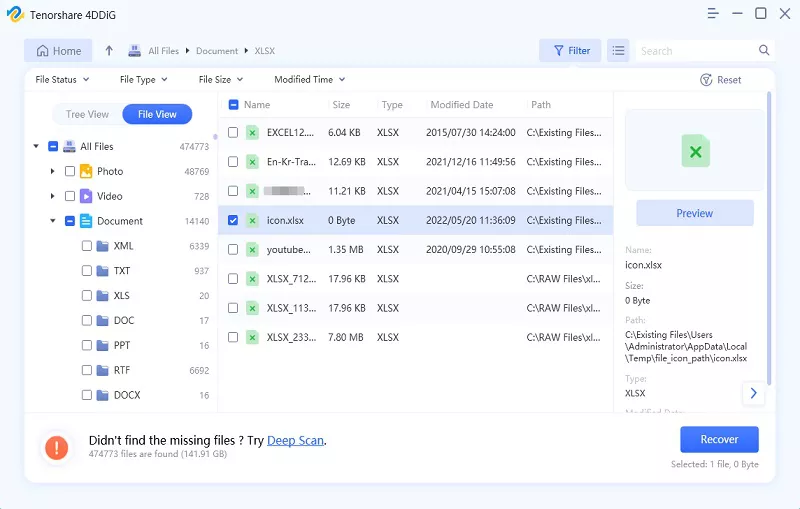
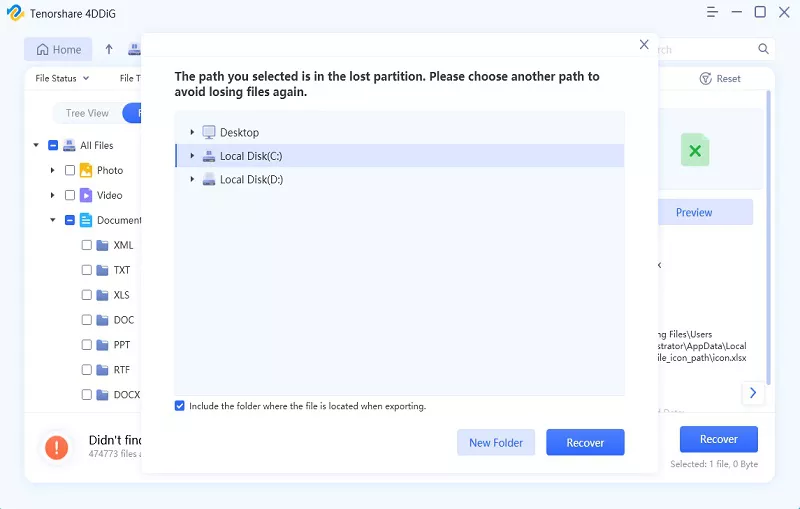

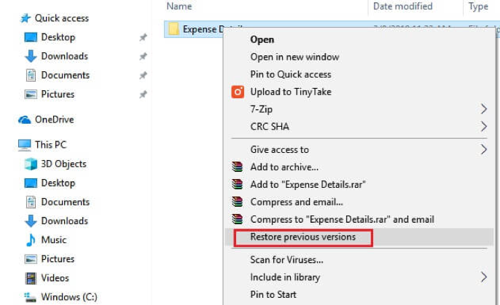
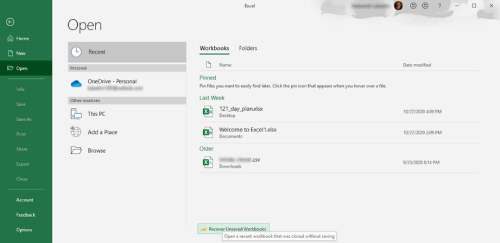








User forum
0 messages